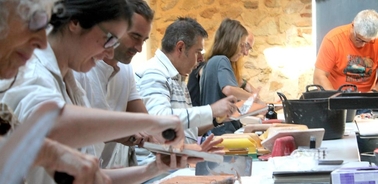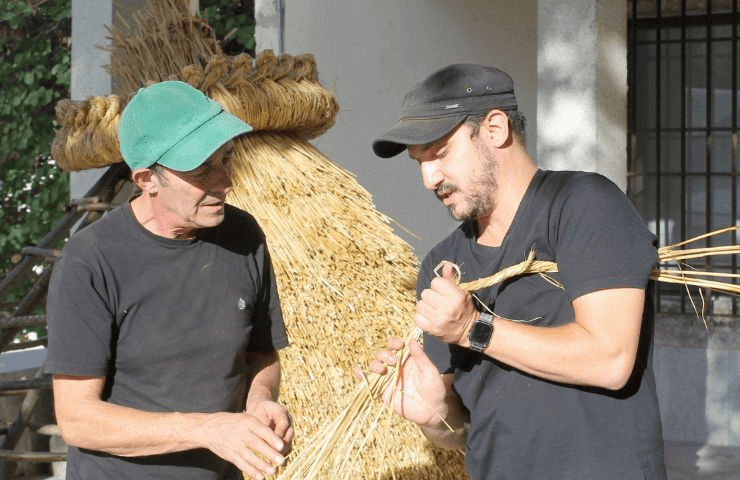IE School of Architecture and Design Explores the Intersection Between Craftsmanship and Contemporary Practice

Co-organized with the Traditional Building Cultures Foundation and led by Wesam Al Asali, the program brought together artisans and the community to explore architecture through making.
Segovia, 7 November 2025 - The IE School of Architecture and Design, together with the Traditional Building Cultures Foundation organized a series of workshops exploring the intersection between traditional craftsmanship and contemporary architectural practice. Led by Professor Wesam Al Asali - Director of Materials and Methods at IE School of Architecture and Design and coordinator of the collaboration between the School and the Foundation - the program brought together master artisans representing diverse building traditions to share their expertise through hands-on sessions.
Open to students, professionals, and the local community in Segovia, the initiative invited participants to engage directly with techniques such as plant fiber construction, traditional carpentry, blacksmithing, esgrafiado, and stone carving. The recently inaugurated IE Creative Campus at the Palacio de Mansilla, together with the IE Creativity Center at Casa de la Moneda, strengthen the connection between Segovia’s cultural heritage and academic innovation at IE University.
"By working directly with materials and artisans, participants can learn techniques that are at risk of disappearing, while also discovering how this knowledge can inspire new ways of thinking about design and sustainability," said Wesam Al Asali. "Opening this kind of workshops to the wider community allows us to build bridges between tradition, innovation, and contribute to the community with our knowledge".
The workshop program unfolded over several weeks, beginning in September with "Building with Plant Fibers," led by master artisan Manuel Monteserín at the IE Creativity Center, followed by "Traditional Carpentry" with master Miguel Ángel Tapia at the same venue and "Blacksmithing" with master Elías de Andrés at Casa de la Moneda Museum. In October, the series continued at the IE Creative Campus in Palacio de Mansilla with "Esgrafiado," led by master Carolina Alcalá, and "Stone Carving" with master Feliú Martín Farré. Each workshop invited participants to explore a unique craft tradition through hands-on engagement with master artisans.
Juan Carlos Redondo, Director of the IE Creativity Center, pointed out that the workshops reflect the Center’s mission to "expand our understanding of creative energies through the ancestral nature of traditional materials." He explained that the initiative rests on three pillars: "the Center’s commitment to exploring the creative potential of craft, the enthusiasm of IE University students who engage with ancestral techniques to inform future architectural practices, and the support for Professor Wesam’s research, which gives vernacular construction methods a prominent place in contemporary architecture."
Redondo also reflected on the deeper cultural significance of the program, emphasizing that "crafts embody not only individual skill but also a universal and communal essence of human creativity. This perspective aligns with the program’s broader aim of connecting hands-on making with shared cultural memory and collective imagination".

Wesam Al Asali's teaching and research connects traditional craft knowledge and digital technologies such as augmented reality and 3D modeling, demonstrating how tradition and manual skills can inform architectural innovation. His projects include InnixAR, an experimental vaulted pavilion that combines traditional masonry techniques with augmented reality guidance, enabling builders to construct complex, form-found geometries without physical molds or scaffolding, and Alternative Skies, an installation presented at the 2025 Venice Architecture Biennale that reimagines traditional vault construction through lightweight, modular structures, exploring how craft, material intelligence, and digital fabrication can shape contemporary architecture.